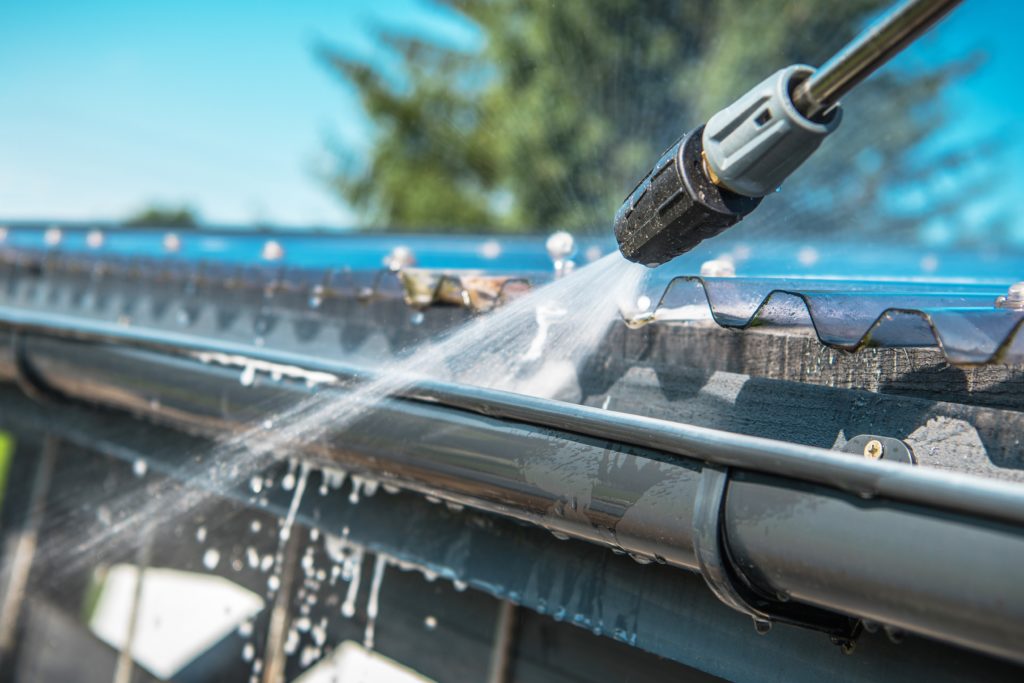The autumn season is coming to an end, and the leaves are falling quickly. On the other hand, winter is approaching, and everyone is preparing for the coldest season.
Unfortunately, most leaves from trees nearby your house don’t fall to the ground. They’re resting in your gutters without knowing the effect they can cause your property if they aren’t removed before the snow starts falling.
To keep ice dams and melting ice from accessing your walls, it’s vital to correct clogged gutters and ensure they’re in a better condition. If you’re planning on preparing your gutters for the winter season, here’s a step-by-step gutter maintenance procedure:
- Clear The Gutters
The autumn leaves are always vibrant and colorful. They remain so until they fell off the trees. Once they’re disconnected from the trees, they become a headache, just like the ones in your gutters.

Now that winter is quickly approaching, you don’t want the leaves and debris in your gutters to escalate to a severe issue. Therefore, you should act accordingly and clear all of this debris out from your gutters.
To remove leaves and debris from the gutters, use a firm ladder to access the gutters, then scoop out all leaves and anything else that shouldn’t be there. If your home is near many trees, clearing your gutters should be a regular task to prevent them from clogging.
It’s also important to ensure you do the final gutter clearance after all of the leaves have fallen from the trees to eradicate any chances of clogged gutters once the snow starts to fall.
- Clean The Gutters
After you’ve removed all the leaves and debris from the gutters, the next step will be cleaning them. A light cleaning can do the magic unless the gutters have a severe blockage. However, if the gutters are completely messy, you might need to perform a deep cleaning to ensure they’re clear and can allow smooth water flow.
When cleaning the gutters, you can use any gentle household cleaner. Alternatively, you can purchase a gutter cleaner solution for effectiveness.
- Inspect The Gutters
After the gutters are completely clean, you can thoroughly inspect them to see if they need repair or replacement. Unlike when they’re flooded with leaves and coated with dirt, it’s easy to sport dents, cracks, and holes on your gutters when they’re clean.
To determine if you have leaky gutters, you can use your hose pipe to run water through the gutters toward the downspouts. Study how the water is moving and if some of it is leaking.
This move will help you determine spots requiring immediate attention and if they’ll be effective in winter. If you notice something wrong with the gutters, contact a professional who can assess the issue and offer an effective solution.
- Check End The Caps
Gutters’ end cups are flat plastic installed at the end of the gutters. End caps prevent water from flowing in the wrong direction while forcing it to flow toward the downspouts.
End caps are essential in ensuring that the gutters function properly. That said, it’s important to check if they’re in better condition before winter. Common end-cup issues you should check are cracks, loose fixtures, or tears. End caps are constantly under pressure, especially during heavy rains; hence they’re prone to wear. If you notice any tears on your gutter’s end cups, consider replacing them for efficiency.
- Install Gutter Guards
Gutter guards are protective barriers that are placed on top of the gutters. These guards allow water to penetrate while preventing solid substances from accessing the gutters. Once you’ve installed gutter guards, you bid farewell to regular gutter cleaning.
It’s important to note that gutter guards require proper installation to function well. Therefore, if you’re unsure whether you can install them effectively, consider hiring experienced personnel.
- Ensure Your Downspouts Are Functional
Downspouts are an essential aspect of your gutters. They prevent water running from the gutters from splashing against your walls or accessing the foundation. They also direct the flow of water in the right direction and prevent it from accessing driveways and walking paths.

While water puddles can only become muddy during summer, they can turn into slippery ice patches that can lead to severe injuries.
To prevent this from happening, ensure your downspouts are functional and direct water in the right direction.
- Prune Nearby Trees
The first point discusses how you should remove leaves and debris from your gutters. If there aren’t any nearby trees taller than your eaves, you wouldn’t have to worry about leaves clogging your gutters.
Now that you’re preparing the gutter for winter, it would help if you prune nearby trees to prevent leaf accumulation in the future. While trees are good at enhancing air quality, they can also be disastrous in winter or during severe storms.
Conclusion
Winter brings along extreme cold and snow. During this season, it’s impossible to make home improvements that require you to step outside for prolonged hours. The season is also wet and can cause water accumulation around your home. For these reasons, it’s important to ensure your roof and gutters are in better condition to prevent ice dam formation.
Besides ice dam formation, too much weight on your gutters due to blockage can cause them to shift away from the house, allowing water to easily access your walls and foundation. If you’re preparing for winter, consider following the above-discussed gutter preparation tips, and rest assured that they’ll remain functional for the rest of the season.






